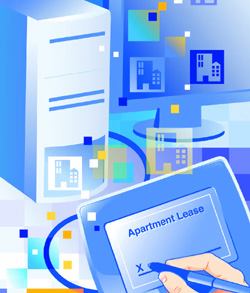COMPUTERS AND KIOSKS As far as where prospects actually complete a paperless lease, Realty DataTrust’s Cornell has two suggestions: kiosks or computers, both of which could be located in the leasing office.
“The kiosk is really nothing more than a computer. With the touch screen, you may need bigger buttons, but that’s it,” says Cornell, who says kiosks could provide both prospects and residents with an abundance of information. Residents could pay rent, enter service requests, view local information, and line up concierge services, for example. Prospects could view available apartments, floor plan layouts, photos, area maps, and local hot spots.
“The kiosk can provide an interactive aspect to the leasing office for prospects in conjunction with the leasing staff or when they aren’t readily available,” Cornell says. “It can also act as a self-service station for residents when the staff is busy or if they just prefer this type of interaction. [It’s] no different than an ATM or cell phone store today where you can either talk to someone or just walk up and get your money or pay your bill. Depending on access to the kiosk for residents, it offers around-the-clock service such as paying my rent at 11 p.m. the day before it’s due.”
E-SIGN HERE, PLEASE Regardless of where a resident completes their lease, though, they still must sign it for the document to be legally binding—and that’s new ground for apartment firms and just about everyone else. “To be a truly paperless system, you need to allow the person to submit an e-signature rather than print them out and hand it to the person to sign,” Cornell says.
How can this be done? “It could be where they sign something electronically, like signing credit cards at the store,” Cornell says. “But you wonder if that equipment is expensive and if you have to put in a pen and a screen like you would see at a store.”
For its student users, Place Properties already accepts online signatures. “They agree to an e-commerce agreement,” Campbell says. “They are legally bound to anything online being as good as signing their name. Rather than signing, you click an accept button.”
Soon enough, residents and prospects across the country could be clicking such a button and signing leases in management offices and at home. Just ask the countless number of renters who are looking for their next apartments online.
Les Shaver is a freelance writer in Arlington, Va.
ACTION ITEMS DISCOVER THE BENEFITS OF GOING PAPERLESS
If you decide to take on the challenge of going paperless, you can reap rewards.
